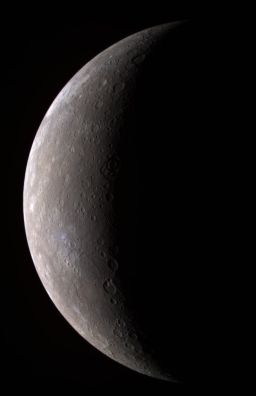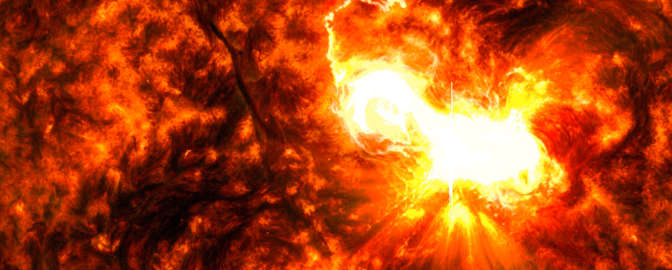Mercury in color

Written by
Emily Lakdawalla
January 22, 2008

NASA / JHUAPL / CIW
Mercury in color from MESSENGER
MESSENGER's wide-angle camera snapped this color shot of Mercury as it approached for its first flyby, on January 14, 2008. The image is false color, composed of three images captured through near infrared, far red, and ultraviolet filters (with wavelengths of 1000, 700, and 430 nanometers). Some relatively fresh craters are surrounded by splashes of brighter, bluer material than the generally reddish color of the Mercurian plains.
NASA / JHUAPL / CIW / LASP
First spectrum from Mercury
This image represents some of the first data returned from MESSENGER's Mercury Atmospheric and Surface Composition Spectrometer (MASCS). As MESSENGER flew past Mercury for the first time on January 14, 2008, MASCS pointed at the ground to gather spectra from the surface.So, is there anything we can learn from staring at that graph? The first thing to notice is that the graph slopes. It rises almost monotonically from the shortest wavelengths to the longest wavelengths. This is known as a "red" spectrum -- it's brighter in longer, redder wavelengths than in shorter, bluer wavelengths. A spectrum that sloped in the opposite direction would be thought of as "blue," and a spectrum that was pretty flat across all wavelengths would be described as "gray." (The Moon is a good example of a place that's spectrally gray.) So Mercury is "red." Reddish colors on rocky surfaces in the solar system generally indicate places that have been exposed to space weathering for some time. Fresher surfaces, like the interiors and ejecta blankets of fresh craters, tend to look gray or blue by comparison to the reddish surfaces they've punched in to. Just take another look at that global shot of Mercury above -- you can see a couple of fresh crater splashes on the surface, and they look blue.
Earth's First Line of Defense
Support the team of astronomers defending Earth with a gift today.
Donate

 Explore Worlds
Explore Worlds Find Life
Find Life Defend Earth
Defend Earth

